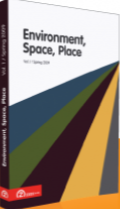The Architecture of Solitude
The Architecture of Solitude
Author(s): Mark H. DixonSubject(s): Philosophy
Published by: Zeta Books
Keywords: Solitude; spiritual practice; Medieval Christian monastic orders;
Summary/Abstract: As a spiritual or meditative practice solitude implies more than mere silence or being alone. While these are perhaps indispensable components, it is possible to be alone or to live in silence and nevertheless be unable to reconfigure these into genuine solitude. Solitude is also more than being in some remote or inaccessible place. Even though geographical isolation might be conducive to solitude, with rare exceptions human beings have seldom sought solitude in complete seclusion in the wilderness. The places where human beings have sought solitude have in the end been human places, human-built places. It should come as no surprise then that through architecture humans beings have sought to build solitude, to construct, through stone and glass and wooden structures, places that are conducive to and encourage solitude. Such structures include individual hermitages, monasteries, temples and even cathedrals. In each case the purpose is to translate or reconfigure a natural geographical place into a space, a human space, where solitude as a spiritual or meditative practice becomes possible. What the individual sojourner brings to the experience is an inner openness to the architecture, to the natural environment and to the spiritual realm which interweave to create solitude. This paper examines (1) the spiritual need to experience solitude, (2) what it is that solitude requires and (3) the endeavor to create solitude through architecture and the challenges it poses to both architecture and spiritual practice. In particular the paper explores and compares solitude's architectural expression in three Medieval Christian monastic orders – the Camaldolesce Order, the Carthusian Order and the Cistercian Order. Despite their common heritage these orders realize solitude, as an essential spiritual value, through unique architectural expressions.
Journal: Environment, Space, Place
- Issue Year: 2009
- Issue No: Vol.1/1
- Page Range: 53-72
- Page Count: 20
- Language: English
- Content File-PDF

